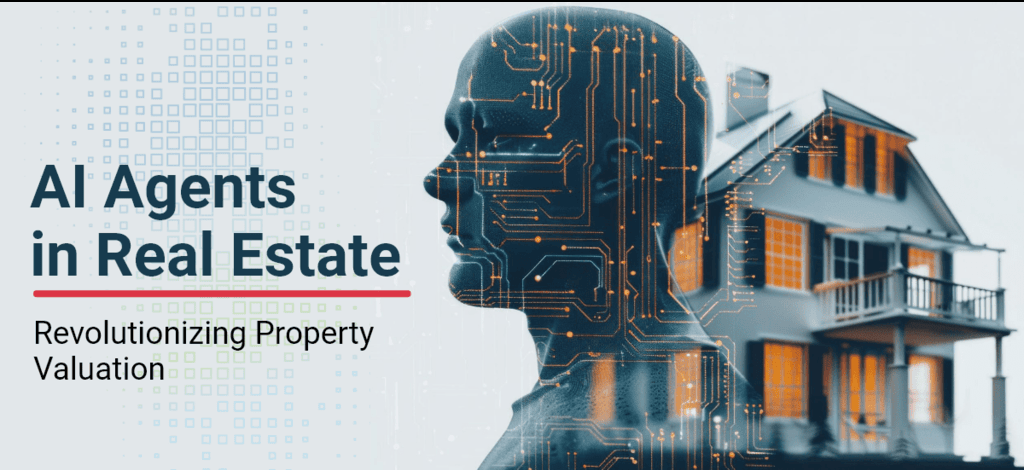Let’s be honest – everyone’s got an opinion about AI in property valuations these days. Half the industry thinks robots are about to steal our jobs, while the other half believes AI is the magic bullet that’ll solve every valuation headache.
As someone who’s been in the trenches of property auctions for years, I’ve seen plenty of tech promises come and go. So let’s cut through the noise and bust some of the biggest myths floating around about AI and property valuations.
.
Myth 1: “AI Will Replace Human Valuers Completely”
Reality Check: Not happening anytime soon, mate.
This is probably the biggest whopper I hear at industry events. Yes, Automated Valuation Models (AVMs) can crunch through massive datasets faster than you can say “comparable sales analysis.” They’ll process thousands of recent transactions, rental yields, and market indicators in seconds.
But here’s what they can’t do: walk into a Victorian terrace in Brighton and immediately spot that the previous owner’s DIY disaster has knocked £20k off the value. They can’t smell that damp problem lurking behind fresh paint, or notice that the “sea view” is actually a sliver glimpsed between two tower blocks.
.

At Palace Auctions, we’ve seen this play out countless times. A property looks fantastic on paper – all the right boxes ticked in the database – then our experienced team does a site visit and discovers issues that would make AI’s head spin (if it had one).
The smart money isn’t on replacement; it’s on collaboration. AI handles the heavy lifting with data, while human expertise tackles the nuanced stuff that actually matters when the hammer falls.
.
Myth 2: “AI Valuations Are Always More Accurate”
Reality Check: Accurate at what, exactly?
Sure, AI doesn’t have Monday morning blues or get distracted by a good cup of coffee. It’s consistent, I’ll give it that. But accuracy? That’s where things get interesting.
AI excels at pattern recognition within its training data. Feed it enough sales in a postcode, and it’ll spot trends faster than any human. But chuck in a unique property – maybe a converted church or a house with that perfect Instagram kitchen – and AI often defaults to treating these special features as statistical noise.
I’ve watched AVMs confidently value properties that any seasoned valuer would flag immediately. That “bargain” price in the data? Turns out it was a distressed sale with seller concessions that skewed everything. The AI saw a data point; a human would’ve seen a red flag.
.
Myth 3: “AI Understands Local Markets Better Than Humans”
Reality Check: Data isn’t the same as understanding.
This one makes me chuckle. AI can tell you the average square meter price for every postcode in London, but can it explain why properties on the left side of a particular street consistently outperform the right side by 15%?
Local knowledge isn’t just about numbers – it’s about understanding that the council’s planning applications show a new Tesco going in next year, or knowing that a particular school catchment area is about to change. It’s recognising that the Victorian terrace with original features will always trump the 1960s rebuild next door, even if they’re statistically similar.
.

In the auction world, this local intelligence is pure gold. We’ve seen bidders from out of town rely purely on online valuations, only to discover they’ve missed crucial context about flood risks, transport links, or neighborhood dynamics that locals take for granted.
.
Myth 4: “AI Makes Valuations Instant and Effortless”
Reality Check: Fast doesn’t always mean useful.
Yes, AI can spit out a valuation in seconds. Impressive! But here’s the thing – that instant number is only as good as the data going in, and property data is often messier than a student house after freshers’ week.
For auction properties particularly, you’re often dealing with unique circumstances. Probate sales, distressed situations, properties that need work – these don’t fit neatly into AI’s training patterns. The algorithm might confidently value a property based on comparable sales, completely missing that it needs £30k of structural work.
The real efficiency comes from using AI to handle the grunt work – compiling comparables, tracking market trends, generating base-line valuations – then letting experienced professionals add the context and judgment calls.
.
Myth 5: “AI Will Make Property Investment Risk-Free”
Reality Check: There’s no such thing as a crystal ball.
Some people seem to think AI’s predictive powers border on the mystical. “The algorithm says this area will boom!” they cry, mortgaging their future on machine learning models.
AI is excellent at identifying patterns in historical data and projecting trends forward. But property markets are influenced by countless variables – political changes, interest rate fluctuations, local planning decisions, even changes in working patterns (hello, post-COVID office trends).

The most sophisticated AI model couldn’t have predicted that a global pandemic would suddenly make suburban homes with garden offices the hottest property in town. Human judgment, local knowledge, and a healthy dose of skepticism remain your best tools for managing investment risk.
.
What AI Actually Does Well (And Why That Matters)
Now, before you think I’m some sort of Luddite, let me be clear – AI brings genuine benefits to property valuation:
Speed and Scale: Processing thousands of comparables instantly? Game-changer for portfolio valuations and bulk assessments.
Consistency: No bad hair days, no Friday afternoon fatigue affecting judgment calls.
Pattern Recognition: Spotting market trends and correlations that might escape human notice.
Automation: Handling repetitive tasks so humans can focus on the complex stuff.
For auction houses like ours, AI tools help streamline the initial assessment process. We can quickly identify properties worth closer inspection and focus our expertise where it adds most value.
.
The RICS Response: Regulation Coming Soon
Here’s something concrete to look out for – the RICS is finalising guidance notes on AI adoption in property valuations, expected this autumn (2025). This isn’t about blocking progress; it’s about ensuring AI tools meet professional standards and users understand both capabilities and limitations.
The guidance will likely cover when AI valuations are appropriate, required human oversight levels, and transparency requirements. For investors and industry professionals, this should provide much-needed clarity on best practices.
.
The Real Future: Hybrid Intelligence
The future isn’t humans versus machines – it’s humans with machines versus humans without them. The valuers who’ll thrive are those who embrace AI’s strengths while maintaining the human insight that clients actually need.
Think of it like GPS navigation. Sure, you could still use a paper map, but why would you when technology can handle route planning while you focus on actually driving? AI in valuations works the same way – it handles the data heavy lifting while humans focus on interpretation and judgment.
For property investors, buyers, and sellers, this means better, faster initial assessments backed by professional expertise where it matters most. You get the efficiency of technology with the wisdom of experience.
The bottom line? AI isn’t replacing property professionals any more than calculators replaced accountants. It’s just changing what we spend our time on – and frankly, that’s a change worth embracing.
Whether you’re considering properties at our next Palace Auctions event or anywhere else in the market, remember that the best valuations combine technological efficiency with human insight. That’s not a myth – that’s just smart business.
…..


